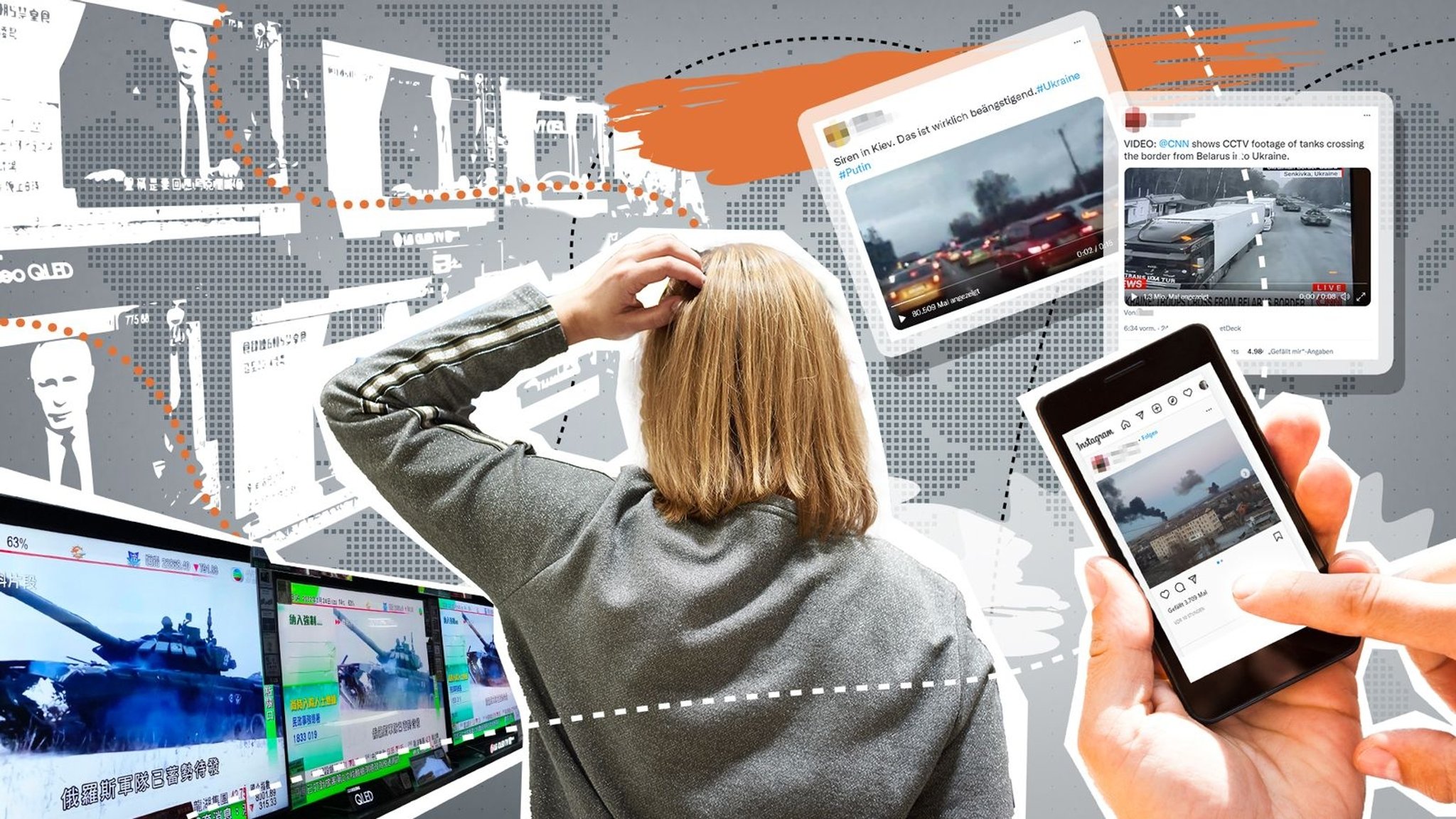The situation in Ukraine has escalated. The Russian army is attacking targets all over the country.
Through social networks, countless pictures and videos of fleeing people, approaching tanks, missile attacks and low-flying jet fighters are spreading. Much of this material is unverified: whether it actually shows what it claims to show as well as where, when and by whom it was taken - all of that is often not comprehensible at first glance. Therefore, unverified material from the internet should not simply be adopted and shared.
But how can one recognise which sources are reliable or which videos are authentic? And how can one find out whether photos show what they claim to show? The #Faktenfuchs provides answers to these questions.
Some general tips beforehand:
- Be sceptical about photos and videos from sources you cannot assess.
- Think carefully about what and whether you distribute something yourself.
- Consult content from credible, independent media.
Verifying sources: Who posted this - and why?
Since anyone can post something on social media platforms, it is worth taking a close look at who is behind a profile. It can be useful to ask yourself the following questions:
Is the owner of the profile known? If a person posts something under a clear name and is traceable on site, it can be an indication of authenticity. A foreign correspondent of a reputable newspaper, a reporter of a news agency or a local journalist usually communicate transparently and comprehensibly on social networks.
In the current situation, journalists from independent, international media are also in Ukraine and reporting from there.
Is the profile operator also the originator of the material? In a fast-changing, confusing situation like the current one in Ukraine, lots of photos and video material are created. Some people share just such dramatic images on their accounts without indicating where the material comes from. This makes it difficult to trace. If it is clear who recorded the material, it is easier to assess how it should be evaluated.
Does the source pursue a political agenda? Especially in war, the parties involved pursue very different interests and may try to strengthen their own agenda through certain publications as well as the dissemination of certain content. Therefore, one should look closely at who the person behind the source is and whether they are possibly pursuing political intentions.
The #Faktenfuchs has summarised how to recognise a reputable source in a video.
Verifying videos and images: Are the details of place, time and context correct?
Anyone who is confronted with photo or video material of the Ukraine war and is unsure whether the material is authentic can ask themselves these questions:
Is the photo actually up to date? Outdated photos are often used on the internet to deceive and present false facts - such cases have already occurred in the Russia-Ukraine crisis.
However, there are ways to find out if the photo is outdated. Many search engines can not only search for terms, they can also search for the same or similar images based on a particular photo. If a picture is older and already circulating on the internet, one has a good chance of finding it.
The image search engines of Google, Yandex, Bing or Tineye, for example, are suitable for this.
Has the material been changed? A reverse image search can also help with this question. If a photo has been altered, one can search for the original among the search results - which can give important clues about possible image manipulation.
In addition, a close look at the material can help: Are there indications that the picture has been manipulated? For example, are the shadows and proportions correct? These hints can also help with the verification of video material - here, too, cuts, false shadows and distorted movements can indicate a fake.
What if I am still not sure? If you are unsure whether the video is authentic, you should check if fact-checking geolocation experts or research collectives have already examined the material. The research collective Bellingcat, for example, collects questionable footage from the Ukraine war in a public database, including links to fact-checkers. Correctiv collects false claims as well as manipulated photos on the conflict between Russia and Ukraine in this article. Furthermore, this map gives an overview of video and photo material. In addition to the tweets from which the material originates, assessments by correspondents or geolocation experts are also linked here. This may also help with the assessment.
If there are more precise location details for a video or photo, map services such as Google Maps can be used to try and find out whether the details are correct. More background on how professionals do this can be found, for example, here (in English) or in this Tagesschau article (in German).
"Hier ist Bayern": Der BR24 Newsletter informiert Sie immer montags bis freitags zum Feierabend über das Wichtigste vom Tag auf einen Blick – kompakt und direkt in Ihrem privaten Postfach. Hier geht’s zur Anmeldung!
